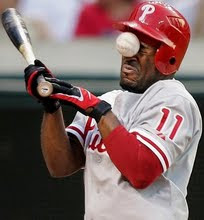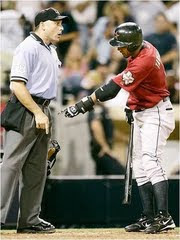Here's some examples for you:
Player A: 18/30 for 300 yards, 3 TDs, no INTs or turnovers
Player B: 18/30 for 300 yards, 3 TDs, no INTs or turnover
Logic would tell you that both Player A and Player B each had just as good of a day because both had the same exact stat line. But let's say Player A was facing the worst defense in the league and Player B was facing the best. This changes your perception on who has the better day doesn't it? Player B then clearly had the better day because Player A should have put up better stats than Player B, yet he did not.
Another example:
A RB gains six yards on first down. That player has greatly helped his team because it gives the team a greater chance to get the first down. If that team gets the first down, it's easier for that team to move down the field and gives them a better opportunity to score points. Now let's say that same RB gains six yards, but this time it was on 3rd and 7 and the team is then forced to punt. That RB still got six yards (which still shows up in stats like Yards Per Carry (YPC)), but the result on his team is drastically different.
What can we learn from these examples? Well from example one, we learn that defenses are important. It's a lot easier to put up stats against a crappier opponent than it is against a more difficult one. From the second example, we learn that situations and downs are important. When we combine these, we learn that we must judge players based upon the specific situations that they are in.
However, to judge these players against everyone else in the league, we must compare these specific situations versus how other players in the league would do in those specific situations. If the average RB in the league only gains 2 yards on 3rd and 7 situations, then even though our RB in the second example only gained 6 when the team needed at least 7, he still did better than what a lot of RBs would have done and he still gets a bit of a edge.
This is the groundwork for what I call football sabermetics and what the site Football Outsiders (FO) does. Even though FO does not actually call their statistics football sabermetrics, I mean let's call a spade a spade.
Here's another example for you.
- The Giants drive 80 yards to get a TD. Tiki Barber gets 45 of those yards, Eli Manning gets 30 of those, and Brandon Jacobs gets a 5 yards TD run.
- Tom Brady is on his own five yard line and gets intercepted by Bob Sanders. On the next play Joseph Addai runs into the end zone for a TD
- The Carolina Panthers drive 80 yards to get a TD. Jake Delhomme gets 20 yards going 4/4 (I'm sorry Panthers fans but this is just a hypothetical) and DeAngelo Williams gains 60 yards on 8 carries with the TD.
In each of these scenarios, the RB gets the TD. Yet in each of these scenarios, did the RB deserve the TD run? DeAngelo Williams absolutely did, but did Jacobs and Addai? This is another example of where each situation is different and this is also something DVOA takes into account. This also shows how surprisingly unimportant individual TDs can be. This seems counterintuitive because this goes what was just discussed in the beginning- it's not really about yards, but all about the score. However, that's not necessarily true on an individual level. How individual players get to the points is actually more important than the points themselves. Mike Alscott spent years vulturing TDs away from Warren Dunn. Dunn got the yards but Alscott got the TD. Yet you ask anybody which one was the better RB- and they'd all say Dunn. Again, this is on an individual level to judge how good an individual player is.
FO says it perfectly, "DVOA does a better job of distributing credit for scoring points and winning games by using a value based on both total yards and yards towards a first down." I've used DVOA in many, many posts, but let me explain it to you better. In laments terms, DVOA rates players compared to how the league average would have done in that same situation. DVOA is used for all aspects of the game, but for our purposes today, I'm just gong to discuss it within the aspect of a QB, RB, TE and WR. If a WR has a 10.0% DVOA rating, that means what they do is ten percent better what the league average player would do, and if that same player has a -20.0% DVOA rating, that means a replacement player could have done a 20% better job than that player. For you baseball guys, think of DVOA as analogous to VORP.
DVOA stands for Defense-adjusted Value Over Average. It is first compiled by finding VOA (guess what that stand for?) by looking at how every single situation played out, it's success and failures, and then looks to see how that individual player did in relation to how the rest of the league did (this goes back to the example of a RB gaining 6 yards when the average back would have only gained 2). But as we've stated before, how that player does against a certain defense also matters. So that VOA is then weighted against what defense the player is facing and the position their offense is on the field.
However, DVOA only ranks how an individual player does per play (analogous to YPC). But there is some value of a player that continually produces- even if it's only league average. That's where DYAR comes in. The example FO uses is: let's say you have a RB that carries the ball 300 times in a season. Now, let's take that player out of the equation, what happens to those 300 plays? Normally, a team would put in a league average player (again VORP at work). However, which back up would you rather have: Maurice Jones Drew or Fred Taylor? When MJD was playing with Taylor, he was technically the back up but obviously the better back. Now how would you rather have, Peyton Manning or Jim Sorgi? What about Tom Brady or Matt Cassel? Everybody's back up is different so those extra 300 plays isn't necessarily weighted against you're individual back up- but to how league average back ups have done in similar situations using DVOA. Therefore, how you perform as a whole compared to how a back up would do is weighted on a scale to produce DYAR- Defense-adjusted Yards Over Replacement.
Let me also give you a great example now of the disparity between perception based on "normal" stats and football sabermetrics- Adrian Peterson. Adrian Peterson is widely regarded as one of, if not, THE top running back in the NFL. If you watch him play and break tackles- it could be magical. You hear all these great features ands skills AD has and you see how good he is in fantasy and you think he is Jesus. But when you use football sabermetrics, he's good, just not Jesus good. Last year he was 12th in DYAR and 22nd in DVOA (3.3%). When you compare him to how he did against similar defenses and situations versus other RBs- we was just good. His value came in that he got a lot of carries as shows by his DYAR ranking.
Now I fully admit DVOA and DYAR should not be used in the same way that WAR and UZR and BABIP and wOBA is used. Football is still a team sport versus baseball which is extremely individualized. There are still systems and lines that affects an individuals play and frankly there's a bit of distrust I have towards the stats still. But I think it's great evidence towards judging a players true worth.
If you're still interested and want to learn more about how to better analyze football, read The Hidden Game of Football, the landmark book that paved the way for FO.
You can also read, FO's explanation of DVOA and DYAR here.







0 comments:
Post a Comment